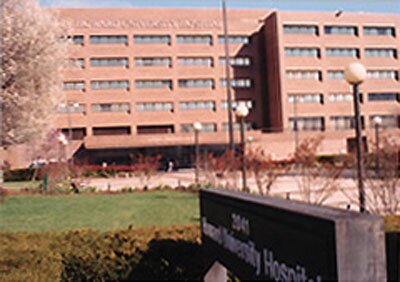Response Time at Howard U. Hospital Questioned After Journalist's Death
After suffering from chest pains last year, Mercii Thomas went to the Howard University Hospital emergency room at the urging of her resident assistant. "It felt like my heart was caving in," said Thomas, a junior psychology major at Howard University. Thomas said she waited about four hours to see a nurse and two more to see a doctor, who quickly diagnosed her with a severe muscle sprain in her chest. Thomas said she was relieved to know her health problem was not life- threatening, but vowed never to return to Howard's emergency room. "It wasn't that the people were unpleasant. I just waited an unseemly long time," Thomas said. "It was just upsetting to be having chest pains and not know what was wrong." Emergency medical response throughout the District of Columbia has come under scrutiny since the Jan. 8 death of David E. Rosenbaum, a retired New York Times editor who was robbed and fatally assaulted in his Northwest Washington neighborhood. D.C. Mayor Anthony A. Williams has ordered an investigation into the performance of the Emergency Medical Services, whose preliminary reports indicated no apparent signs of major trauma. However, the response of the hospital, where Rosenbaum died at age 63, has also been questioned. "The victim's injuries were misunderstood at admittance, and reportedly there were delays in medical treatment," wrote Phil Mendelson, chairman of the D.C. Council's Judiciary Committee, which oversees fire and emergency services. The Washington Post asked in an editorial, "Why was Mr. Rosenbaum left on a stretcher in a hallway at the hospital and not evaluated or examined for at least an hour, until he began vomiting? "Reportedly it was only then that authorities realized that Mr. Rosenbaum had suffered a massive head injury -- a discovery made nearly two hours after fire units were first dispatched to the street where he was found." University spokesmen said they would not comment on the Rosenbaum case, citing privacy requirements in the Health Insurance Portability and Accountability Act of 1996, known as HIPAA .
However, in responding to student concerns, Thomas Gaiter, medical director and associate dean for clinical services at the hospital, said sometimes delays are unavoidable. "I think it is important for students to know we are an adult Level I trauma center," said Gaiter. A Level I trauma center is a hospital certified by the American College of Surgeons to respond to serious injuries, such as gunshot wounds. Hospitals with this designation have a surgeon who is a trauma specialist on call 24 hours a day, and handle at least 1,200 trauma cases a year. Gaiter said his hospital has the ability to respond in seconds to trauma cases. According to Gaiter, Howard University Hospital is only one of two adult Level I trauma center hospitals in the Washington area. "We're one of the busiest" medical centers in the city, Gaiter said. The emergency room treats 110 to 160 patients a day, often including several trauma cases, he said. Trauma patients and those with life- threatening illnesses take precedence over others in the emergency room and therefore will be seen sooner, Gaiter said. Nevertheless, Howard student Derek Jackson said he believed his wait time was unreasonable. In January 2004, Jackson experienced severe stomach pains and was taken to the emergency room. Jackson said he did not remember much of his experience, but was told by his companion that he waited eight to 10 hours in the emergency room without treatment from a doctor before his mother arrived from Connecticut. Jackson's mother removed him from the hospital and took him for treatment in his Pennsylvania hometown. There, it was discovered that his appendix had burst and was damaging his internal organs. While Jackson's case is extreme, Gaiter said his staff does its best to serve students and keep them healthy. "We can't say no, we won't accept" a patient. "We're here," Gaiter said. In addition, Gaiter said the hospital was implementing a patient tracking system that allows doctors to move patients along more quickly in the emergency room. Gaiter encouraged students to have a primary care physician in the city so they would not have to come to the emergency room for issues that are not life-threatening. Posted Jan. 31, 2006 |
https://blackcollegewire.org/news/060131_hu-hospital/
|
Home | News | Sports | Culture | Voices | Images | Projects | About Us Copyright © 2006 Black College Wire. Black College Wire is a project of the Black College Communication Association and has partnerships with The National Association of Black Journalists and the Robert C. Maynard Institute for Journalism Education. |

